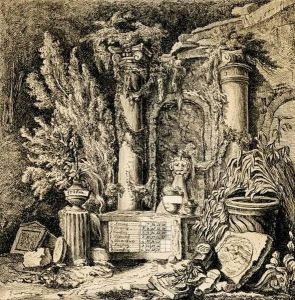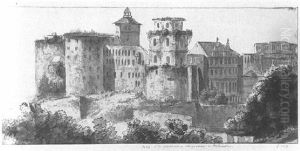Johann Jakob Lorenz Billwiller Paintings
Johann Jakob Lorenz Billwiller was a Swiss painter, primarily known for his portraits and historical scenes. Born on May 18, 1745, in St. Gallen, Switzerland, he grew up in a time when Swiss art was experiencing significant developments, with more artists receiving formal training and exposure to the broader European art scene.
Billwiller's early life and training are not well-documented, but it is known that he was active during the late 18th century and early 19th century, a period that saw the rise of neoclassicism in art. This movement, characterized by a return to classical ideals of beauty, harmony, and proportion, likely influenced Billwiller's artistic style.
Throughout his career, Billwiller was recognized for his skill in capturing the likeness and character of his subjects. His portraits often featured prominent individuals of his time, capturing the cultural and social elite of Switzerland. However, his work extended beyond portraiture to include historical scenes, which were popular during the neoclassical period for their didactic value and their appeal to patriotic sentiments.
In addition to his paintings, Billwiller also engaged in teaching, passing on his knowledge and techniques to a new generation of Swiss artists. His contributions to the Swiss art world during his lifetime were significant, as he helped to foster a greater appreciation for fine arts in the region.
Johann Jakob Lorenz Billwiller continued to work and teach until his later years. His death on December 28, 1835, marked the end of a career that had spanned many decades and had left a lasting impact on the Swiss art community. While not as widely known as some of his European contemporaries, Billwiller's work remains a testament to the artistic developments of his homeland during a time of cultural change and evolution.

